Subscribe to our ▶️YouTube channel🔴 for the latest videos, updates, and tips.
Home | About Us | Contact Us | Privacy | Math Blog
Area of a Trapezium
In area of a trapezium we will discuss about the formula and the solved examples in area of a trapezium.
Trapezium:
A trapezium is a quadrilateral having one pair of parallel opposite sides. In the given figure, ABCD is a trapezium in which AB ∥ DC.
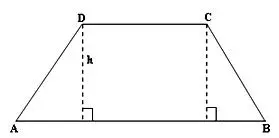
Area of a Trapezium:
Let ABCD be a trapezium in which AB ∥ DC, CE ⊥ AB, DF ⊥ AB and CE = DF = h.
Prove that:
Area of a trapezium ABCD = {¹/₂ × (AB + DC) × h} square units.
Proof: Area of a trapezium ABCD
= area (∆DFA) + area (rectangle DFEC) + area (∆CEB)
= (¹/₂ × AF × DF) + (FE × DF) + (¹/₂ × EB × CE)
= (¹/₂ × AF × h) + (FE × h) + (¹/₂ × EB × h)

= ¹/₂ × h × (AF + 2FE + EB)
= ¹/₂ × h × (AF + FE + EB + FE)
= ¹/₂ × h × (AB + FE)
= ¹/₂ × h × (AB + DC) square units.
= ¹/₂ × (sum of parallel sides) × (distance between them)
Formula of Area of a trapezium = ¹/₂ × (sum of parallel sides) × (distance between them)
Solved Examples of Area of a Trapezium
1. Two parallel sides of a trapezium are of lengths 27 cm and 19 cm respectively, and the distance between them is 14 cm. Find the area of the trapezium.
Solution:
Area of the trapezium
= ¹/₂ × (sum of parallel sides) × (distance between them)
= {¹/₂ × (27 + 19) × 14} cm²
= 322 cm²
2. The area of a trapezium is 352 cm² and the distance between its parallel sides is 16 cm. If one of the parallel sides is of length 25 cm, find the length of the other.
Solution:
Let the length of the required side be x cm.
Then, area of the trapezium = {¹/₂ × (25 + x) × 16} cm²
= (200 + 8x) cm².
But, the area of the trapezium = 352 cm² (given)
Therefore, 200 + 8x = 352
⇒ 8x = (352 - 200)
⇒ 8x = 152
⇒ x = (152/8)
⇒ x = 19.
Hence, the length of the other side is 19 cm.
3. The parallel sides of a trapezium are 25 cm and 13 cm; its nonparallel sides are equal, each being 10 cm. Find the area of the trapezium.
Solution:
Let ABCD be the given trapezium in which AB = 25 cm, DC = 13 cm, BC = 10 cm and AD = 10 cm.
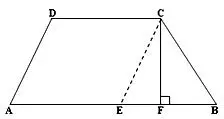
Through C, draw CE ∥ AD, meeting AB at E.
Also, draw CF ⊥ AB.
Now, EB = (AB - AE) = (AB - DC)
= (25 - 13) cm = 12 cm;
CE = AD = 10 cm; AE = DC = 13 cm.
Now, in ∆EBC, we have CE = BC = 10 cm.
So, it is an isosceles triangle.
Also, CF ⊥ AB
So, F is the midpoint of EB.
Therefore, EF = ¹/₂ × EB = 6cm.
Thus, in right-angled ∆CFE, we have CE = 10 cm, EF = 6 cm.
By Pythagoras’ theorem, we have
CF = [√CE² - EF²]
= √(10² - 6²)
= √64
= √(8 × 8)
= 8 cm.
Thus, the distance between the parallel sides is 8 cm.
Area of trapezium ABCD = ¹/₂ × (sum of parallel sides) × (distance between them)
= {¹/₂ × (25 + 13) × 8 cm²
= 152 cm²
4. ABCD is a trapezium in which AB ∥ DC, AB = 78 cm, CD = 52 cm, AD = 28 cm and BC = 30 cm. Find the area of the trapezium.
Solution:
Draw CE ∥ AD and CF ⊥ AB.
Now, EB = (AB - AE) = (AB - DC) = (78 - 52) cm = 26 cm,
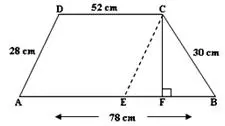
CE = AD = 28 cm and BC = 30 cm.
Now, in ∆CEB, we have
S = ¹/₂ (28 + 26 + 30) cm = 42 cm.
(s - a) = (42 - 28) cm = 14 cm,
(s - b) = (42 - 26) cm = 16 cm, and
(s - c) = (42 - 30) cm = 12 cm.
area of ∆CEB = √{s(s - a)(s - b)(s - c)}
= √(42 × 14 × 16 × 12) cm²
= 336 cm²
Also, area of ∆CEB = ¹/₂ × EB × CF
= (¹/₂ × 26 × CF) cm²
= (13 × CF) cm²
Therefore, 13 × CF = 336
⇒ CF = 336/13 cm
Area of a trapezium ABCD
= {¹/₂ × (AB + CD) × CF} square units
= {¹/₂ × (78 + 52) × ³³⁶/₁₃} cm²
= 1680 cm²
● Area of a Trapezium
● Area of a Trapezium - Worksheet
Worksheet on Area of a Polygon
8th Grade Math Practice
From Area of a Trapezium to HOME PAGE
Didn't find what you were looking for? Or want to know more information about Math Only Math. Use this Google Search to find what you need.
Recent Articles
-
Worksheet on Area of a Square and Rectangle | Area of Squares & Rectan
Jul 19, 25 05:00 AM
We will practice the questions given in the worksheet on area of a square and rectangle. We know the amount of surface that a plane figure covers is called its area. 1. Find the area of the square len… -
Area of Rectangle Square and Triangle | Formulas| Area of Plane Shapes
Jul 18, 25 10:38 AM
Area of a closed plane figure is the amount of surface enclosed within its boundary. Look at the given figures. The shaded region of each figure denotes its area. The standard unit, generally used for… -
What is Area in Maths? | Units to find Area | Conversion Table of Area
Jul 17, 25 01:06 AM
The amount of surface that a plane figure covers is called its area. It’s unit is square centimeters or square meters etc. A rectangle, a square, a triangle and a circle are all examples of closed pla… -
Worksheet on Perimeter | Perimeter of Squares and Rectangle | Answers
Jul 17, 25 12:40 AM
Practice the questions given in the worksheet on perimeter. The questions are based on finding the perimeter of the triangle, perimeter of the square, perimeter of rectangle and word problems. I. Find… -
Formation of Square and Rectangle | Construction of Square & Rectangle
Jul 16, 25 11:46 PM
In formation of square and rectangle we will learn how to construct square and rectangle. Construction of a Square: We follow the method given below. Step I: We draw a line segment AB of the required…


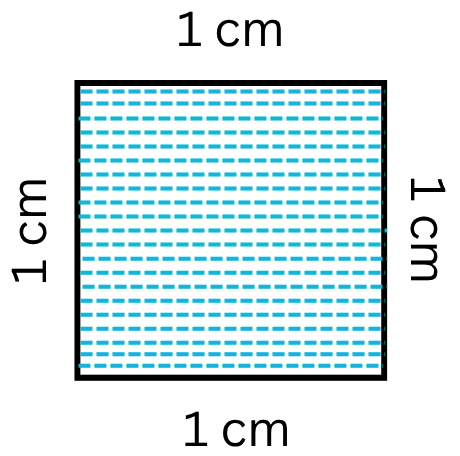
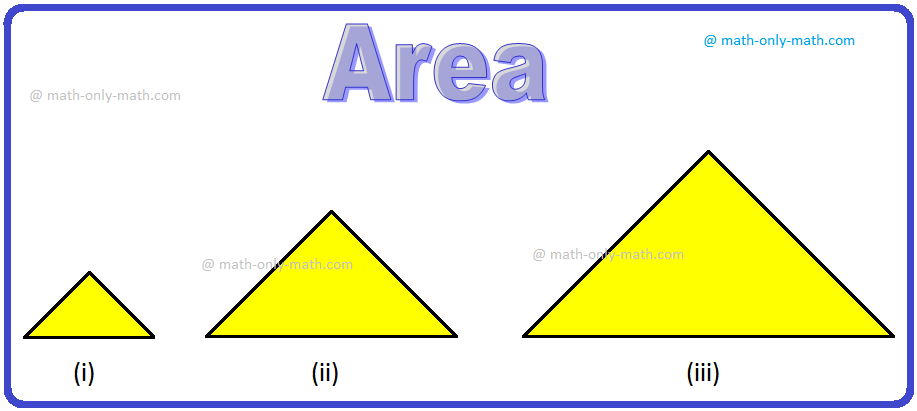
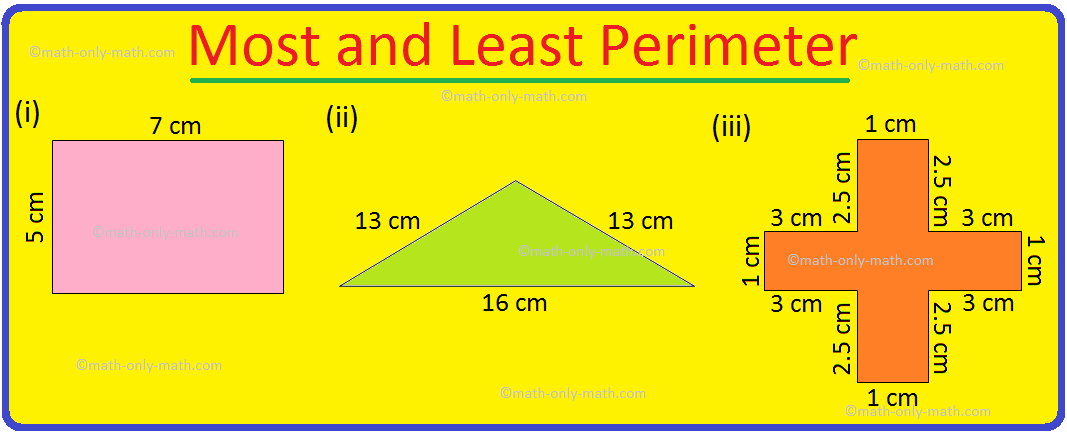
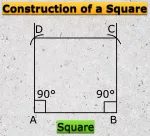
New! Comments
Have your say about what you just read! Leave me a comment in the box below. Ask a Question or Answer a Question.